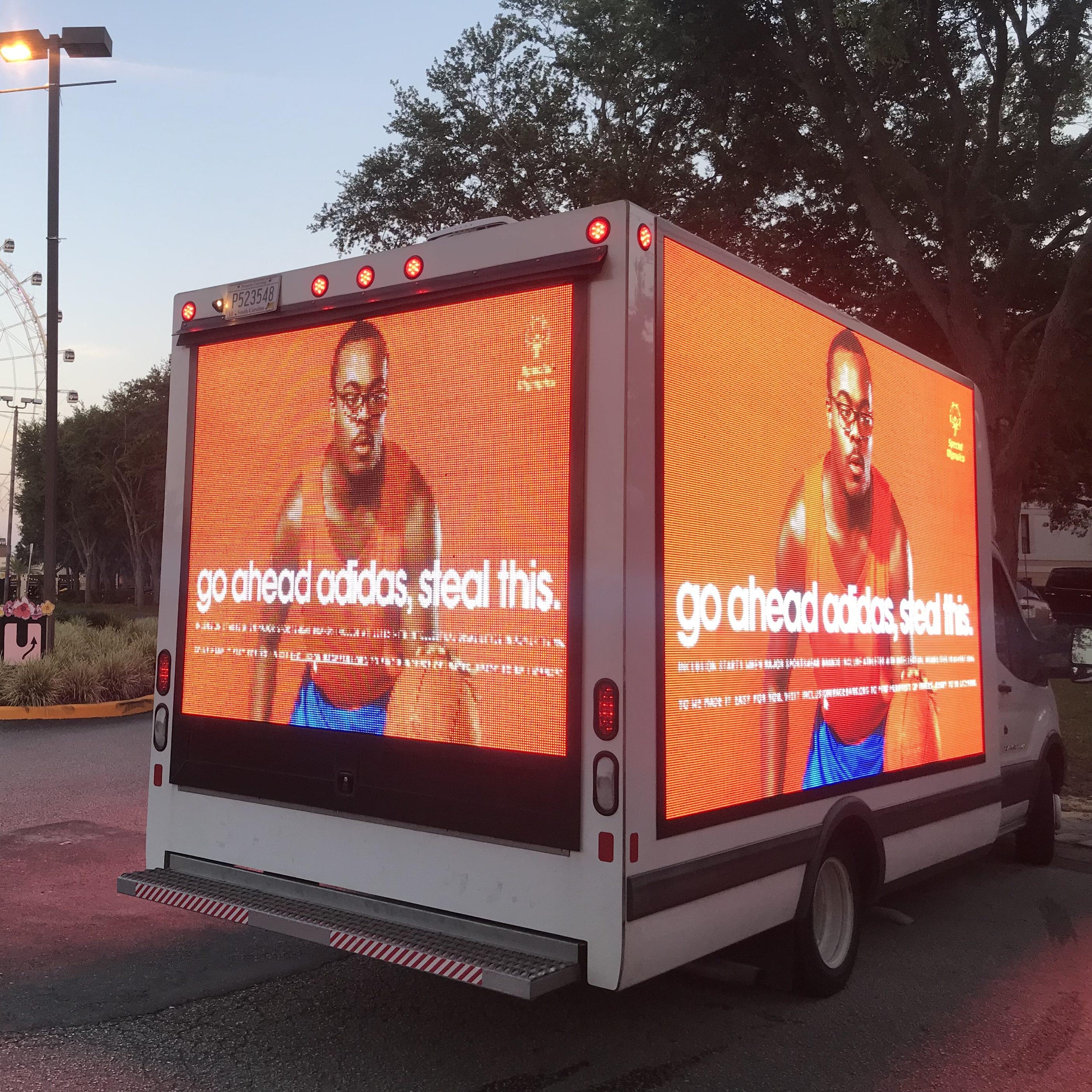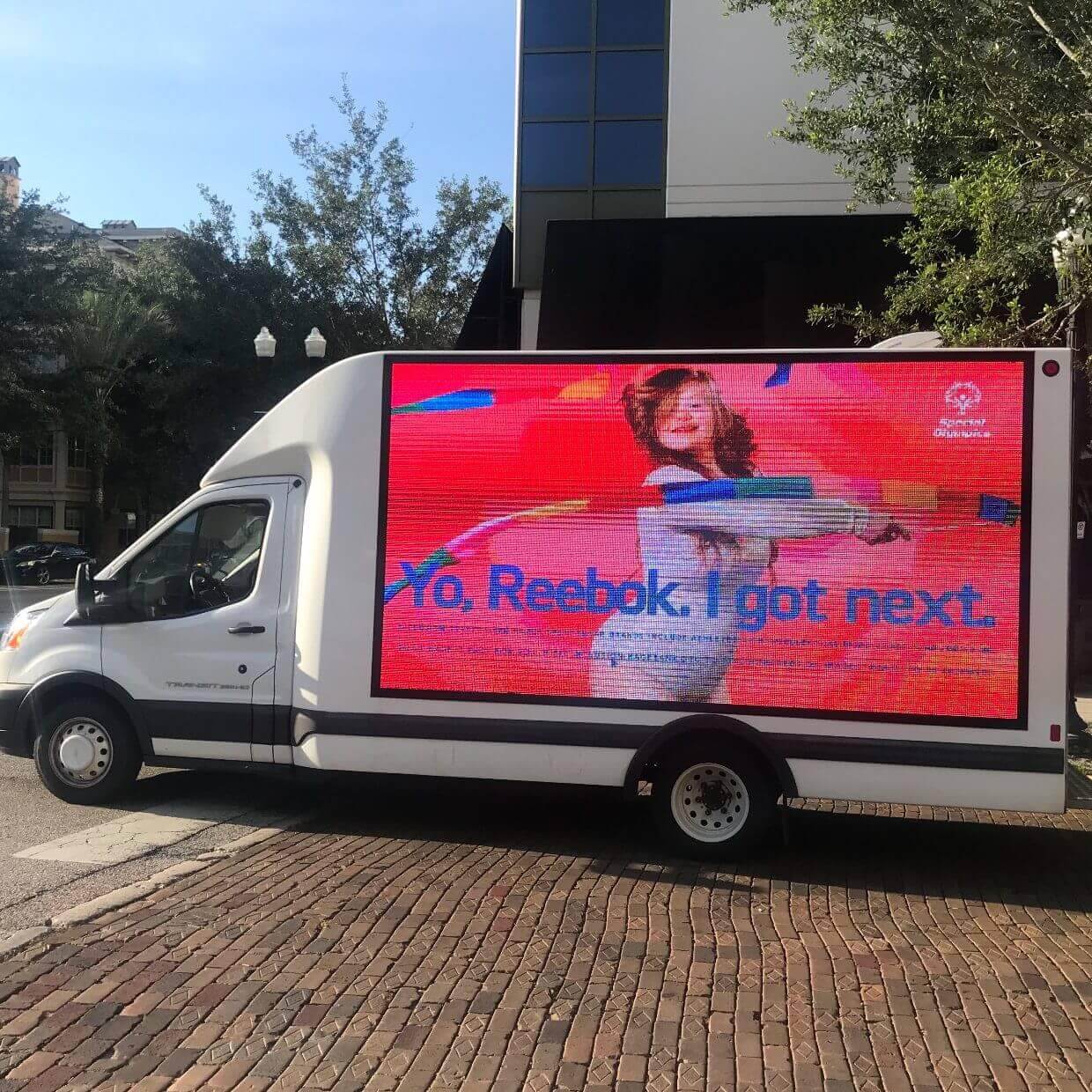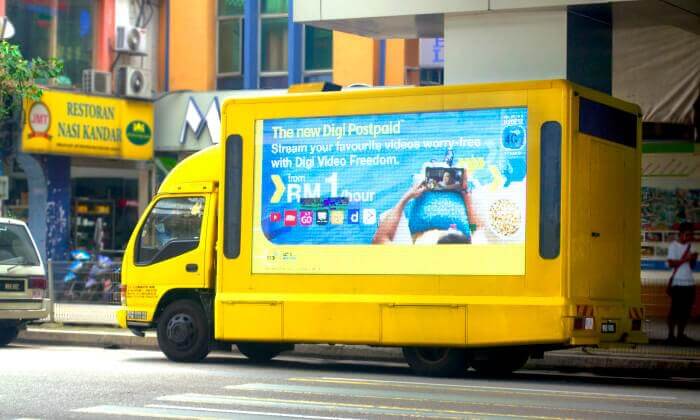
We know small businesses can heavily benefit from mobile billboards through brand awareness, among other advantages, but why are major brands getting behind this outdoor advertising channel? Major brands have already established themselves in the market, have high brand awareness, reach clear targets of people, and constantly reinvent their social presence. So, one will wonder, why they are using mobile billboards as an advertising mechanism to meet their brand personality. Well, they’re maintaining their relevancy by speaking to targets in an out-of-home environment. And they’re doing it well. Let’s take a look at how their digital experience can be translated onto mobile billboards, what the booming trends in outdoor advertising are, and how tech companies like Facebook, Apple, and Amazon incorporate this ad channel as a means of promotion.

Digital on Mobile
Major brands are using mobile billboards and other DOOH strategies to create a better presence in a physical landscape, and they’re doing this by incorporating digital features to speak in a storytelling manner. Big brands strive to tell refreshing stories that connect their current, or potential, consumers to the brand’s moral compass. Think Coca Cola’s polar bear over the holiday season, which was meant to reach the most sentimental of targets. Now every time someone thinks of a polar bear, they think of Coke. That ability to tell a simple, seasonal story is the key for big brands to remain iconic. According to Ad Age, OOH revenues are predicted to reach $7.4 billion this year. The majority of this revenue has to do with digital interference on traditional billboards. How many OOH polar bears will we see this year?
Mobile billboards are great at splattering localized campaigns in a given region to create a pop-up effect for a brand. A brand called Lime, which specializes in electric scooters, connects audiences to their message by manufacturing their scooters as mobile billboards in San Francisco. Their service doubles up as a marketing technique and invites consumers to test out the product in an outdoor setting.
Demographic data is now used to understand the mindset of an audience exposed to a mobile billboard. This data is picked up through digital device activity, and can give deep insights about the ways consumers are changing throughout their day by means of seeing their behavior on their mobile devices. For example, an established alcohol brand may choose to run their mobile billboards in the nighttime because their target demographics are out to play during that time, and can be prone to take action and follow the brand even closer. With the evolution of digitally run mobile billboards, big brands are able to secure more relevance and value from their campaigns.

Booming Trends for Outdoor Advertising
Prime real estate for big brands means that the location of their outdoor advertisement will generate about 2 million impressions. Different from TV and print advertising, impressions sought from an out-of-home ad hold more of a substantial, real-time bearing on consumers. The ongoing trend is that DOOH ads are becoming programmatic, and that the effective use of location intelligence is what’s dominating the market of effective consumer marketing.
By this year, DOOH will make up 39% of total revenues in the channel of outdoor advertising and the ad giants will have realized that effective location data will create more substantial content for consumers, rather than just static billboard messages. Third party data, like geolocation based tech and consumer behavior patterns, are the makers of programmatic OOH tools that better target the perfect consumer. Advanced spatial analytics platforms are on the rise to turn location-based data points from mobile data into a useful insight a brand can hold onto to understand buyer behavior.
Interactivity is showing face in tech, such as with geofenced promotions, which makes a company’s ad a point of sale. Interactive components differentiate online and offline advertising by effectively measuring a campaign’s ROI. This is done through location-based analytics in outdoor advertising. Spatially targeted ads are a trend in learning purposeful insights about potential consumers in a given area. Using location intelligence to their advantage, big brands can optimize their campaigns to speak to the most valuable of consumers.

Why Big Tech Companies Use Mobile Billboards
Spotify’s global executive creative director, Alex Bodman, says, “If you do any outdoor campaign in a unique and creative way, all the people connected on their mobile phones will want to share in on social media. Outdoor advertising can become social media.” (Bloomberg News 2018). This sums up why big tech companies use mobile billboards to hold communication with those interested. On top of Spotify, companies like Facebook, Apple, Amazon, and Netflix are among some of the big names that create substantial outdoor advertising, like mobile billboards, for their range of clients.
Clear Channel Outdoor Holdings (CCO) uses mobile data from third-party service providers to track when people pass by certain billboards. They carry out more than 1200 digital roadside billboards across 28 markets in the States which assures that physical ads in public spaces actually work. According to the Outdoor Advertising Association of America, Apple, Google, and Amazon have ranked among the top six spenders on outdoor advertising in 2017, and Netflix ranked among the top 15. Some of these outdoor advertising executions include digital signage at bus stops and train stations. Facebook is driving their growth through using outdoor signage to alert people about their updated user safety and privacy settings.
These big tech companies, and more, use mobile billboards and other OOH advertising means because they are unavoidable, have high retention rates, and can easily be shared onto digital. This means of promotion serves each company well.

After looking at how digital interference can contribute to effective mobile billboard strategies, some current trends of outdoor advertising, and why big tech companies are focusing more on outdoor advertising, it’s clearly beneficial for well-known brands to invest in the power of mobile billboards.
References:
Bloomberg News (6 August 2018). Tech Companies Go Old School With Billboards To Promote Themselves. Investor’s Business Daily. Retrieved from: https://www.investors.com/news/technology/tech-companies-using-billboards/


